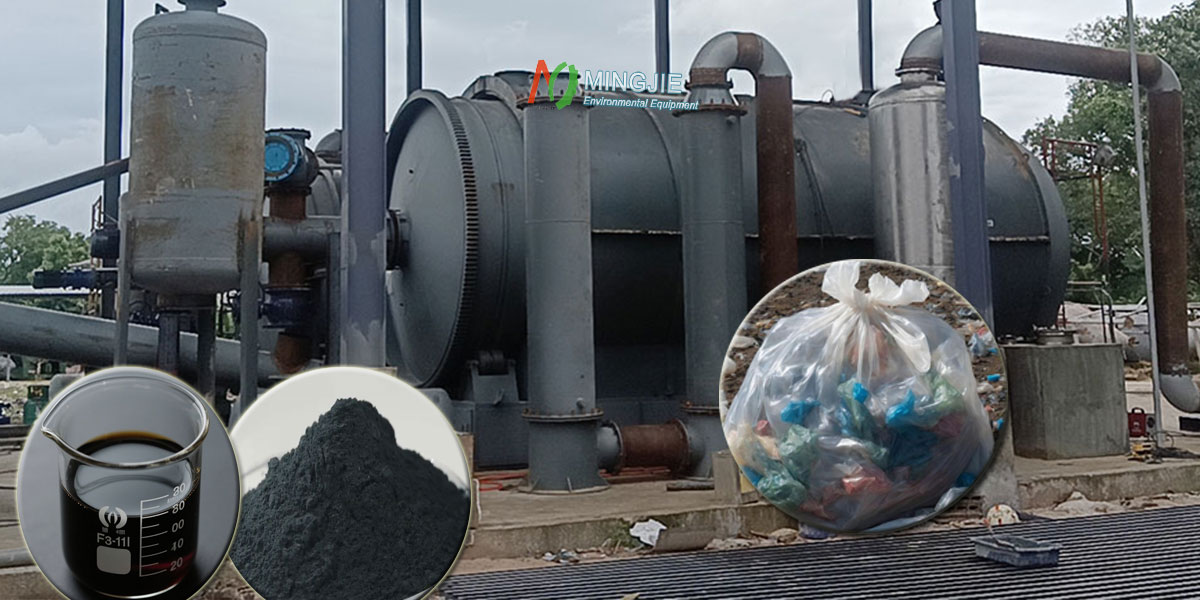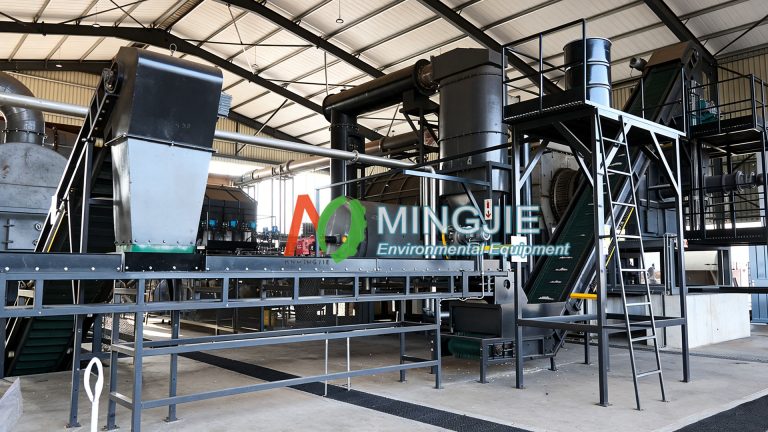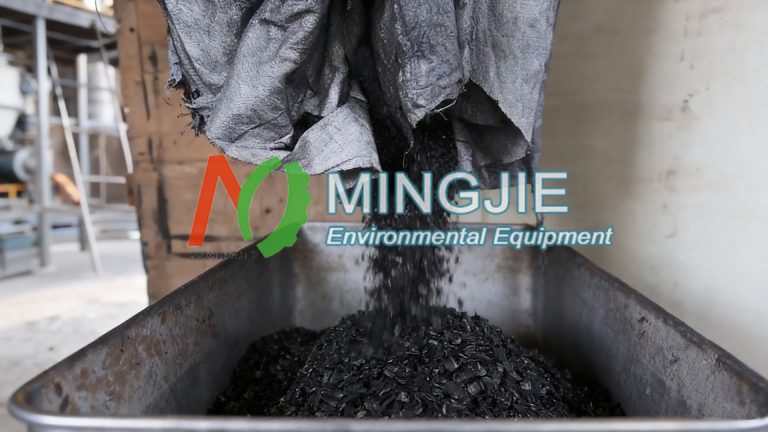Plastic waste recycling plant has become a key component in addressing the plastic pollution problem. It primary function is to process discarded plastic products. Through a series of processes, pyrolysis recycling plant transforms plastic waste into reusable resources.
After sorting waste plastic, different processing techniques are used depending on the type and intended use of the plastic.
For higher-quality plastics, such as PET (polyethylene terephthalate) bottles, the plant uses processes such as melting, drawing, and pelletizing to create recycled PET plastic pellets. These pellets can be reused to produce new plastic bottles, fibers, packaging materials, and more.
For plastics that are difficult to recycle directly, the plant uses chemical recycling and pyrolysis technology. The plastic pyrolysis plant converts the waste plastic into fuel oil and carbon black, which can then be used in various industries.

Methods of Plastic Waste Recycling Plant
Landfilled plastic can severely impede groundwater infiltration, and its additives can also cause secondary pollution to the land. Incineration of plastic produces harmful gases.
Recycling and pelletizing breaks down recyclable plastic into pellets that can be remade into plastic. However, this method is not suitable for plastic films or other laminated plastics. Pyrolysis technology exploits the thermal instability of organic matter in plastics to decompose them under heat.
The plastic waste recycling plant primarily relies on advanced pyrolysis technology to transform plastic waste into valuable resources.
Pyrolysis Of Plastic Waste
Pyrolysis is the process of heating waste plastics to high temperatures (typically between 300°C and 900°C) in the absence or absence of oxygen, breaking down their molecular chains and decomposing them into smaller compounds.
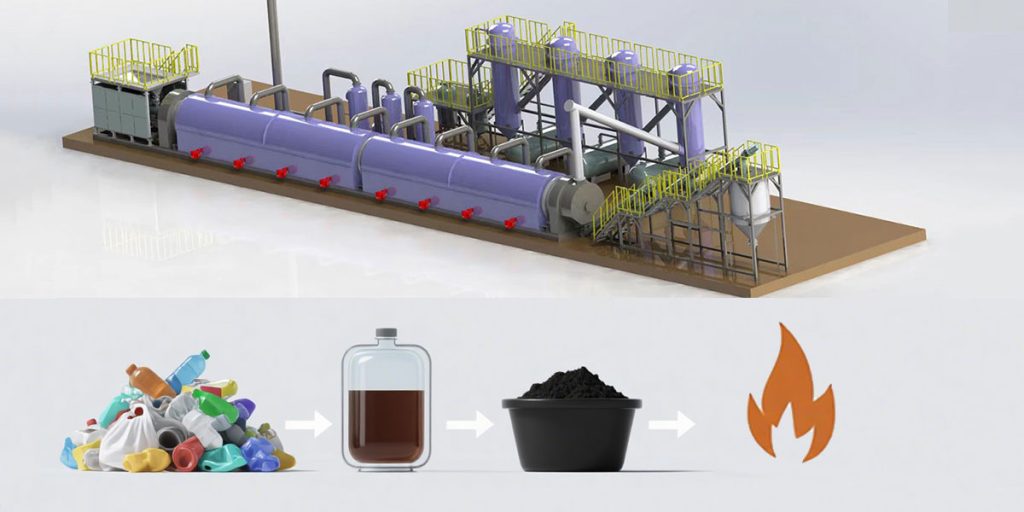
The plastic pyrolysis products include liquid fuel oil, synthesis gas, and solid carbon black. The liquid oil produced by pyrolysis can be further refined and used as fuel or chemical feedstock. The gaseous products can be used for power generation or to synthesize other chemicals. Solid carbon black can be used in industries such as rubber and ink.
Pyrolysis technology can process a wide range of waste plastics, including mixed and cross-linked plastics that are difficult to process through physical recycling, and holds broad application prospects.
Plastic Pyrolysis Plant for Sale
However, pyrolysis technology also faces challenges, such as demanding reaction conditions, requiring high temperatures, and specialized pyrolysis equipment.
Mingjie Group offers plastic pyrolysis equipment with high-temperature-resistant materials, such as 304 and 316L stainless steel.
304 stainless steel reactors are suitable for general plastic pyrolysis reactions. They offer reasonable corrosion resistance to most acids, alkalis, salts, and other media, meeting the chemical reaction environment requirements of conventional plastic pyrolysis processes. 316L stainless steel reactors are suitable for plastic pyrolysis reactions requiring high corrosion resistance, such as processing plastic waste containing chlorine.
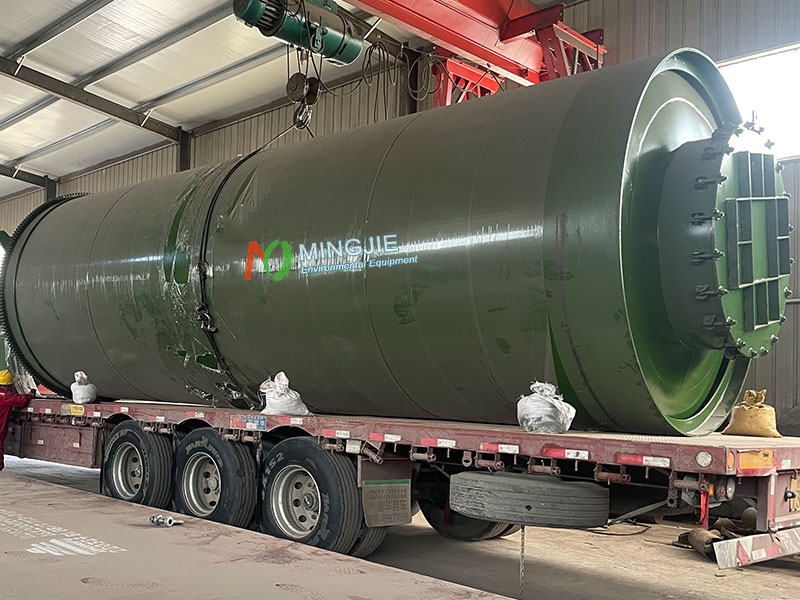
In addition to the pyrolysis reactor system, we also equip the plastic waste recycling plant with oil and gas cooling systems, slag removal systems, exhaust gas purification systems, and automation systems.
The oil and gas produced by the pyrolysis of plastic waste enter the condensation and separation system, and the liquid pyrolysis oil enters the oil storage tank. The non-condensable gas is purified and then fed into the combustion chamber for the pyrolysis reaction. The carbon black produced by the high-temperature pyrolysis is discharged through multiple cooling stages and ultimately discharged into a storage tank.
The flue gas enters the flue gas treatment system, where it undergoes purification treatments such as denitrification and desulfurization to meet emission standards.
Challenges of Plastic Waste Recycling Plant
Plastic waste recycling plant plays a key role in addressing plastic pollution and is a crucial component of achieving the recycling of plastic resources and environmental protection. However, current plastic recycling plants face multiple challenges, including economic, technological, and social ones.
These challenges not only constrain the development of the plastic waste recycling plant but also complicate global plastic pollution control efforts.

